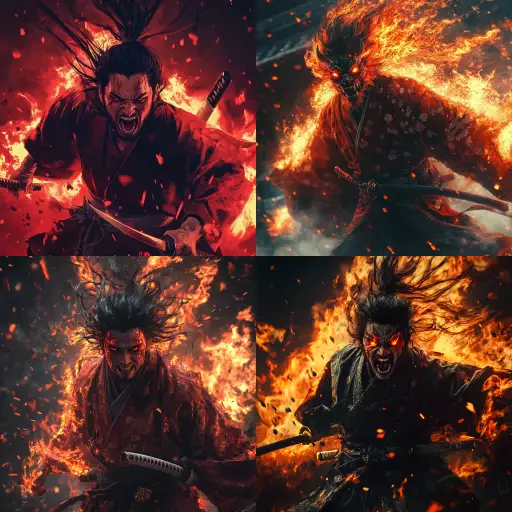Explore the Best AI Image Gallery

Bridging the Gap: How AI-Generated Visual Content is Transforming the Creative Industry
The realm of creativity has always been a space where imagination reigns supreme. However, the advent of artificial intelligence (AI) has introduced a new dimension, blurring the lines between human ingenuity and machine capability. AI-generated visual content, in particular, is rapidly changing the landscape of the creative industry, offering both exciting opportunities and complex challenges.
A Canvas Painted by Algorithms
AI algorithms, trained on vast datasets of images and text, are now capable of generating stunningly realistic and original visuals. From photorealistic renderings to abstract art pieces, AI-powered tools can produce content that was once unimaginable. This opens up a world of possibilities for artists, designers, and businesses alike.
Revolutionizing Creative Processes
- Concept Exploration: AI can assist in brainstorming and visualizing ideas, helping creatives explore different concepts and iterate quickly.
- Content Creation Efficiency: AI can automate repetitive tasks like generating stock images or creating basic designs, freeing up human talent for more complex and creative endeavors.
- Personalized Content: AI algorithms can tailor visuals to individual preferences, enabling the creation of highly personalized experiences in marketing, advertising, and entertainment.
Applications Across Industries
The impact of AI-generated visual content extends far beyond the realm of fine art. Its applications are diverse and rapidly expanding:
- Advertising and Marketing: Creating eye-catching visuals for campaigns, generating personalized ads, and developing immersive brand experiences.
- Entertainment: Designing game environments, producing special effects in films, and creating realistic characters for animation.
- Design and Architecture: Visualizing architectural concepts, generating 3D models, and exploring innovative design solutions.
- Education: Creating interactive learning materials, visualizing complex concepts, and personalizing educational experiences.
Ethical Considerations: Navigating Uncharted Territory
While the potential of AI-generated visual content is undeniable, it also raises important ethical considerations:
- Copyright and Ownership: Who owns the copyright to AI-generated content? The programmer, the user, or the AI itself?
- Bias and Representation: AI algorithms can inherit biases present in the training data, potentially leading to the reinforcement of stereotypes or unfair representations.
- Transparency and Accountability: It is crucial to ensure transparency in how AI systems are developed and used, and to establish mechanisms for accountability when issues arise.
The Future of Creativity: A Collaborative Landscape
AI-generated visual content is not about replacing human creativity but rather augmenting it. The future likely holds a collaborative landscape where AI tools empower artists, designers, and creators to push the boundaries of imagination further than ever before.
As we navigate this evolving terrain, open discussions, responsible development practices, and ongoing education will be essential to harness the full potential of AI while addressing its ethical implications. The creative journey ahead promises to be both exhilarating and transformative, with AI serving as a powerful catalyst for innovation and artistic expression.
![**Representation: A dog acting as a private tutor to a child. The dog holds a ruler in its paw and stands at the blackboard to explain a dog diagram to the child. Graphic style: Line drawing, cartoon style, influenced by Franco-Belgian comics, thick black lines, simplified design, vector, black and white only, in the style of Keith Haring or the French comic strip "Alinéa". [IMPORTANT]: A single continuous line extending from one side of the image to the other, minimalist, strong outlines, line drawing, without lifting the hand, ultra-simplified, no shading, entirely white image, drawing created in the center of a sheet of paper. --ar 16:5** - Variations (Strong) by <@627984126871470085> (fast)](https://images.ai-img.art/thumbnails/150/f4e034998ccd869d8a061fd12017514fcd92210eb33d4222dc9b54716223f4dd.webp)


](https://images.ai-img.art/thumbnails/150/157712d76865d557120f9baf988de3d0525225295a2789c89bf2c4a5a96a03d1.webp)



](https://images.ai-img.art/thumbnails/150/51c93500396faff4e7fa8b42bc68033067b16b2230e3496e95c482a581ff0fe9.webp)




![**Representation: A dog acting as a private tutor to a child. The dog holds a ruler in its paw and stands at the blackboard to explain a dog diagram to the child. Graphic style: Line drawing, cartoon style, influenced by Franco-Belgian comics, thick black lines, simplified design, vector, black and white only, in the style of Keith Haring or the French comic strip "Alinéa". [IMPORTANT]: A single continuous line extending from one side of the image to the other, minimalist, strong outlines, line drawing, without lifting the hand, ultra-simplified, no shading, entirely white image, drawing created in the center of a sheet of paper. --ar 16:5** - <@627984126871470085> (fast)](https://images.ai-img.art/thumbnails/150/7a854648a81e51241dcca8d24dd6e3bfcf07ad1df51baf401c9b729f4cf411fa.webp)














](https://images.ai-img.art/thumbnails/150/9d51c5e673b4f2068b7b01abc35425a06f173b76303adf9ad29ca14302c25b18.webp)










![**Representation: A teenager smiling while thinking about a friendly dog, a comic-style thought bubble with a friendly dog inside. Graphic style: Line drawing, cartoon style, influenced by Franco-Belgian comics, thick black lines, simplified design, vector, black and white only, in the style of Keith Haring or the French comic strip "Alinéa". [IMPORTANT]: A single continuous line extending from one side of the image to the other, minimalist, strong outlines, line drawing, without lifting the hand, ultra-simplified, no shading, entirely white image, drawing created in the center of a sheet of paper. --ar 16:5** - <@627984126871470085> (fast)](https://images.ai-img.art/thumbnails/150/6fc850f638e3dee0c4b121acecad2c8419e02bdeac7f871d625f1003c1c3abe1.webp)





